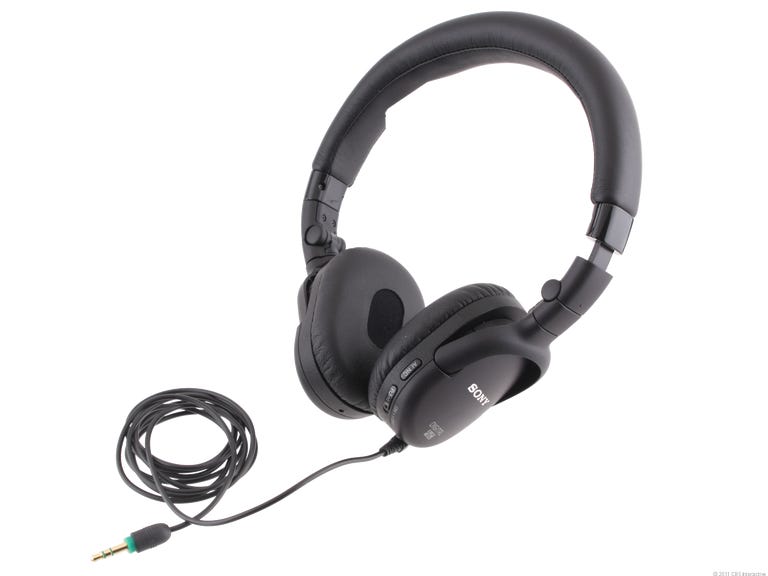 Why You Can Trust CNET
Why You Can Trust CNET Sony MDR-NC200D (Black) review: Sony MDR-NC200D (Black)
Sony MDR-NC200D (Black)
The first thing you'd probably ask me if you were going to buy these active noise-canceling headphones is whether they're better than the the Bose QuietComfort 15 or Bose QuietComfort 3 models.
The Good
The Bad
The Bottom Line
The short answer is no. I found the Bose headphones slightly more comfortable to wear, and they effectively block out more noise than the Sony headphones. On top of that, I'm more partial to their sound, but those Bose models cost $300 and $350, while the Sony MDR-NC200Ds come in at $200. The price difference is significant, and enough to make the Sony NC200Ds a decent value by comparison. Not a bargain, but decent.
What'd I like about them? They're relatively compact, lightweight and good-looking. In that sense, they're more like the QuietComfort 3s, which are also an on-ear model, meaning the padded ear cup sits on top of your ear and doesn't envelope like an over-the-ear model such as the QuietComfort 15. The build quality here also seems tough enough for daily commuters, and the headphones fold up to fit into a nicely designed protective storage case (it's included along with a two-pronged adapter for airplane use).
What's also nice is that unlike the Bose models, you can actually listen to music or movies without the noise-cancellation engaged, which means that if the single AAA battery that powers the active noise cancellation dies, the music doesn't die with it.
Alas, there's no integrated microphone for making calls, but the NC200Ds feature an AI (Artificial Intelligence) noise-canceling function that switches between A, B, and C noise-canceling modes based on the intelligent analysis of ambient noise in your listening environment. It's a little tricky to test, but the AI button rendered the noisy fan in my office nearly silent, although not completely.
I also tried the headphones out in the New York City subway. Here, they muffle train noise, but the Bose Quiet Comfort 15 headphones do a better job, which we expect at their extended price point.
The Sony NC200Ds' left earcup features a Monitor button alongside the Artificial Intelligence switch that allows you to hear what's going on outside your 'phones without taking them off. Of course, you could always just slip them off your ears and let them rest on your neck, but it's comforting to know that the feature exists, and it works.
Overall, I liked the sound of the headphones, though it's worth noting that I actually liked the sound slightly better with the noise cancellation turned off. The bass goes deep with plenty of definition, and voices appear natural with adequate volume extending into the louder ranges.
On the downside, to enhance the detail, the treble is slightly overemphasized and a bit too sizzly. These are what we call "bright" headphones and can lead to listening fatigue with some people over extended listening sessions, like in an airplane or a long car ride.
Other small quibbles include an audible hiss from the noise canceling that takes a little of the warmth out the bass and midrange (vocals). The headphones also sound a touch more hollow (canned) and less open with noise cancellation engaged.
In all, though, there's a lot to like here. Excellent design, flavorful sound, and these guys cost $100 less than the Bose QuietComfort 15. At $200, they're not cheap, but comparatively speaking, they're reasonably priced and worth checking out if you're in the market for a pair of noise-canceling headphones.


